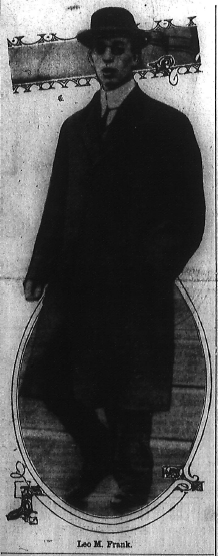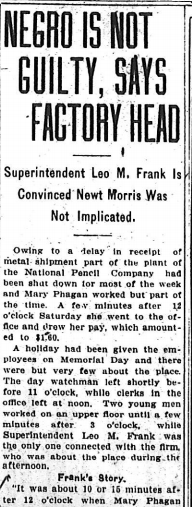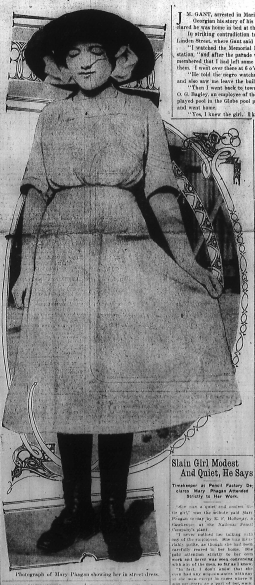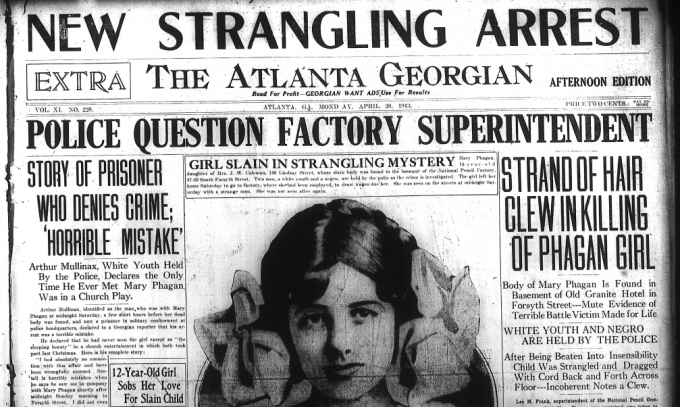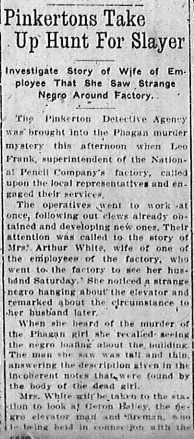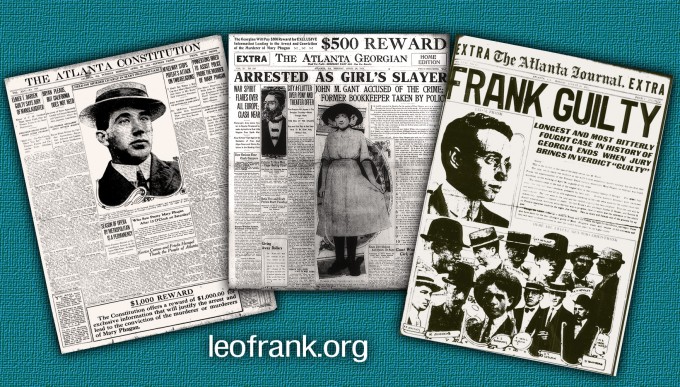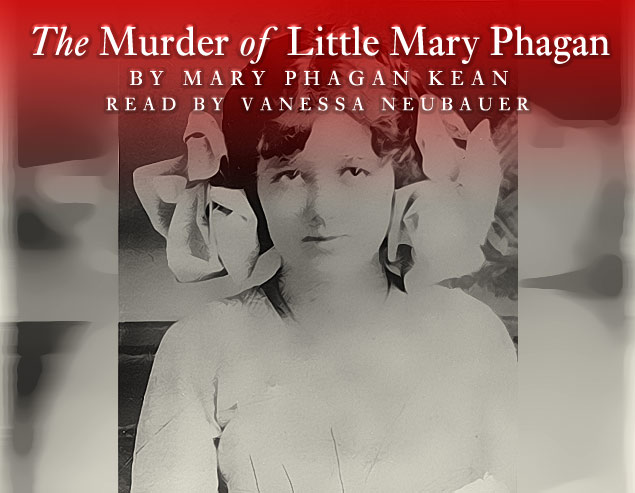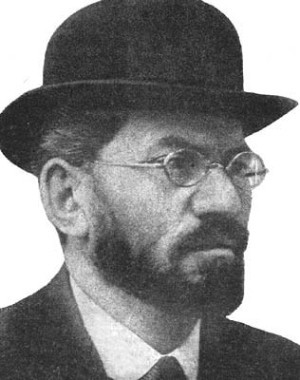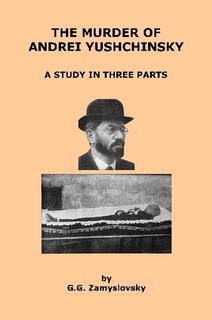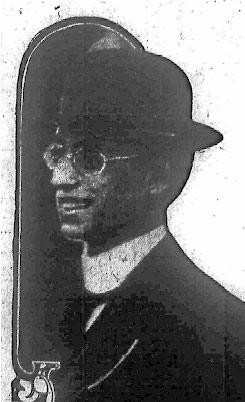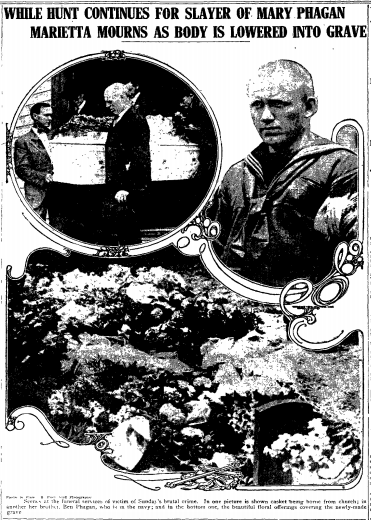
Scenes at the funeral services of victim of Sunday’s brutal crime. In one picture is shown casket being borne from church; in another, her brother, Ben Phagan, who is in the navy; and in the bottom one, the beautiful floral offerings covering the newly-made grave.
Another in our series of new transcriptions of contemporary articles on the Leo Frank case.
Atlanta Constitution
Wednesday, April 30th, 1913
Newt Lee, Negro Watchman, Had a Record for Punctuality in Registering Time Until Night of the Killing—Bloody Shirt Found in His Home by Detectives, but Negro Asserts That He Had Not Seen It for Two Years—Blood Was Fresh, Assert Officers.
MORE ARRESTS WILL BE MADE TODAY, SAY MEN ON THE CASE
“We Have Sufficient Evidence to Convict the Murderer of Mary Phagan, Declare Local Detectives and Pinkertons—Leo M. Frank Subjected to a Gruelling Third Degree—Rumors Spread Over City That Lee Had Confessed Denied by Chief Lanford.
The record of the factory time clock in the pencil plant was brought to police headquarters last night. It shows an irregularity in three separate periods during the night of the murder of Mary Phagan.
Lee, the negro night watchman, was supposed to punch the time piece every thirty minutes during each night of duty. Up until 9:32 o’clock Saturday night it was visited with regularity. An adjustment was skipped from that time until 10:29 o’clock. At 11:04 another adjustment was missed. The next punch was registered at midnight.
The most convincing irregularity of the record sheet, however, is the adjustment that was missed between 2 o’clock Sunday morning and 3. The body was discovered at 3:30 o’clock. Where was the watchman when he failed to punch the hour? Continue Reading →

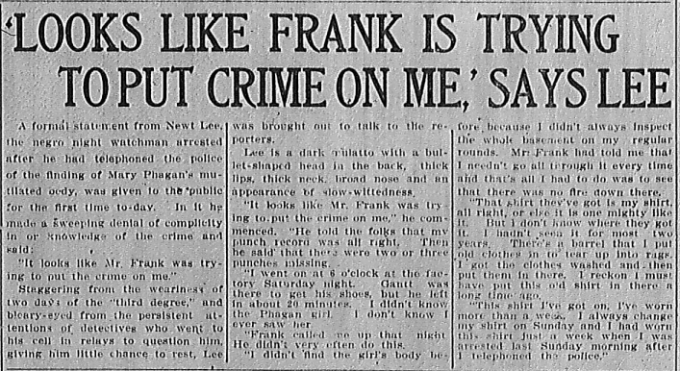
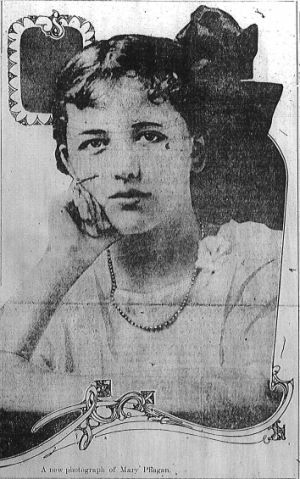
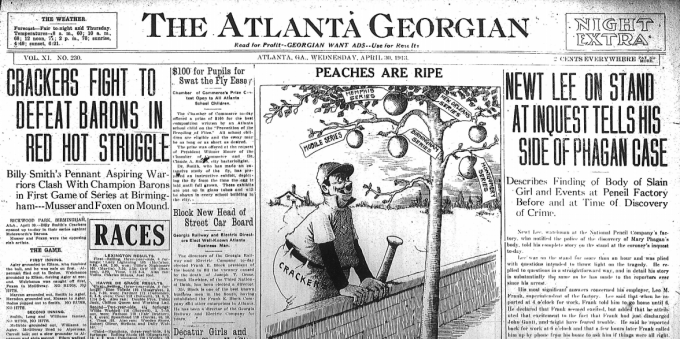
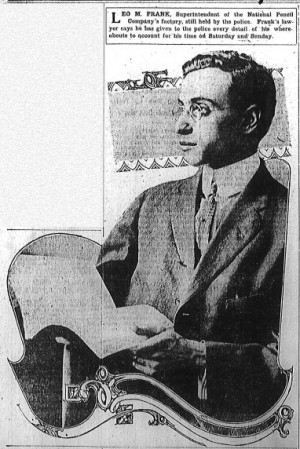
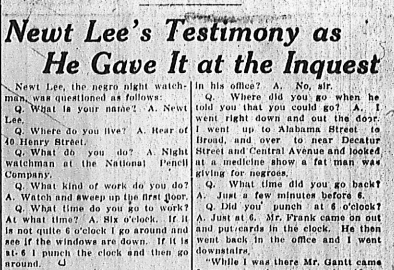

![John M. Gantt, former bookkeeper of the National Pencil company, and acquaintance of Mary Phagan, who is under arrest, and was put through a gruelling [sic] third degree last night at police station. He maintains his innocence.](https://www.leofrank.org/wp-content/uploads/2016/03/Pinkertons-Hired-to-Assist-Police-Probe-the-Murder-of-Mary-Phagan-300x461.png)
